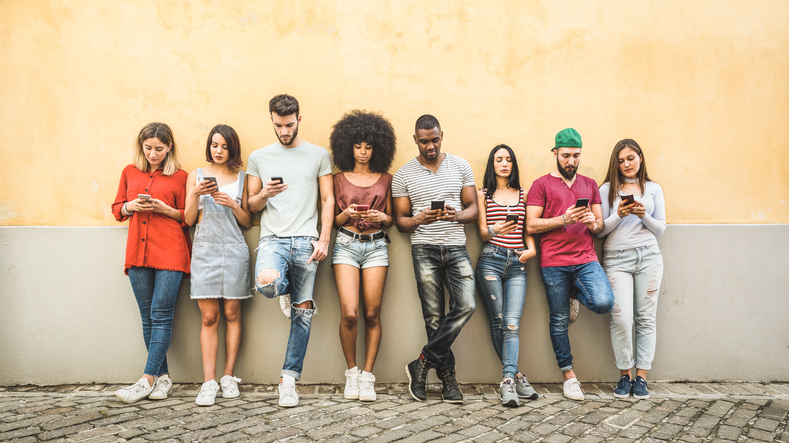Is Facebook Dead to Gen Z?
A look at recent usage trends, and how the company is trying to stay relevant for the next generation of consumers
The writing is on the wall for Facebook — the platform is losing market share, fast, among young users. Edison Research’s Infinite Dial study from early 2019 showed that 62% of U.S. 12–34 year-olds are Facebook users, down from 67% in 2018 and 79% in 2017. This decrease is particularly notable as 35–54 and 55+ age group usage has been constant or even increased.
There are many theories behind Facebook’s fall from grace among millennials and Gen Zers — an influx of older users that change the dynamics of the platform, competition from more mobile and visual-friendly platforms like Instagram and Snapchat, and the company’s privacy scandals are just a few.
We surveyed 115 of our Accelerated campus ambassadors to learn more about how they’re using Facebook today. It’s worth noting that this group skews older Gen Z (ages 18–24); we suspect you’d get different results if you surveyed younger teens.
Overall penetration is still high, as 99% of our respondents have Facebook accounts. And most aren’t abandoning the platform entirely — 59% are on Facebook every day, and another 32% are on weekly. Daily Facebook usage is much lower than Instagram, however, which 82% of our respondents use daily and 7% use weekly.
Data from our scouts also confirms that the shift in usage in the last few years is particularly dramatic among younger users. 66% report using Facebook less frequently over the past two years, compared to 11% who use it more frequently (23% say their usage hasn’t changed).
What’s most interesting is what college students are using Facebook for. When we were in high school and college in the early/mid 2010s, our friends used Facebook to post (broadcast) content via their status, photos, and posts on friends’ Walls. Today, very few students use Facebook to “broadcast” content. Only 5% of our respondents say they regularly upload photos to Facebook, 4% post on friends’ Walls, and 3.5% post content to the Newsfeed (statuses). What are they doing instead?
- Coordinating events — 65% use it to organize or attend events.
- Consuming content — 60% browse Newsfeed.
- Looking up info — 51% use it to look up information on friends (e.g. birthdays), and 42% use it to look up new people they meet.
- Engaging in smaller groups — 55% private message friends (often in the Messenger app), and 43% engage in Groups.
At first glance, it doesn’t seem like this change in use cases is necessarily problematic. Though Gen Zers are posting less on Facebook, they’re still using the platform for other things. However, we believe that these other use cases will degrade over time as users switch to consumption mode. Why?
- If users aren’t posting content, they‘re naturally going to open the app less often — they aren’t waiting to see how many responses or likes they get on their content. If they’re not on Facebook anyway, they’re less likely to use the platform for things they could do elsewhere, like messaging a friend.
- If users are coming to just to browse, they’re seeing less relevant content (because their closest friends have also stopped posting), so their feeds are probably full of ads and random content from older family members and acquaintances. They’re going to spend more of their browsing time on platforms like Instagram that serve them more relevant content.
- If users are coming to look up information (like birthdays or where a friend works), they’re only on Facebook sporadically, and it’s getting increasingly likely that the information will be inaccurate (because others aren’t updating their profiles). If they open Facebook, it will be fleeting, and they’ll lose trust in the platform as a source of information over time.
It’s a vicious cycle that will lead to gradual user churn, as users migrate these use cases to other platforms. Given this, it’s clearly a good time to be building a new app to replace Facebook. Gen Zers are using Instagram and TikTok for some of these use cases, like browsing and posting content. But photo and video-only networks face inherent challenges, and aren’t great for things like group conversations, coordinating events, or even looking up another user’s basic info.
We’ve found that many teens today are cobbling together several products to meet their needs (like sending party invites via private Instagram accounts). They may post and browse on Instagram, private message their friends on Snapchat, and just use texting for coordinating events and chatting in groups. Having to switch between these platforms is inconvenient and annoying — why isn’t there one “super app” that does it all?


